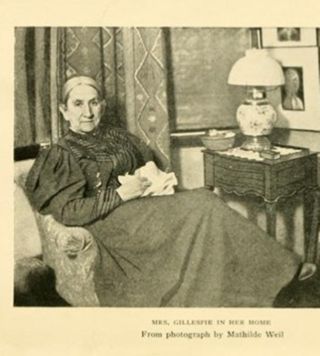From collection Candidates

In 1919, Dr. Elizabeth V. Gillette became the first woman from an upstate county to be elected to the New York State Assembly. This was her second bid for the office. Her victory was the first time in seventeen years that Schenectady County had elected a Democrat to the office. She ran on a labor platform and supported the implementation of eight hour work days and minimum wage bills, child labor laws, and several humanitarian measures. Before moving to Schenectady County, Dr. Gillette worked as a missionary and settlement worker in the East side of New York City. She says that this work led her to become a Democrat because she believed the Democratic Party was actively curing the social evils she witnessed in New York. While in office she was assigned to committees on banks and public education and introduced eight bills into law. These bills focused on varying issues such as expanding suffrage and regulating medical care for children working in mercantile establishments. While none of the of the bills came into law, one bill was passed by both the House and Senate but subsequently vetoed by the Governor. She lost her campaign for re-election in 1920 to the Republican candidate William W. Campbell. Dr. Gillette was born in †Granby, Connecticut on October 21, 1874 to Mary and Albert Gillette. She graduated from New York Medical College and subsequently moved to Schenectady in 1900, where she continued to practice medicine for 37 years.†At the time that she ran for office, Dr. Gillette was a surgeon at Mercy Hospital and is considered one of Schenectady's pioneer surgeons. She was a lifetime member of the National Society of Daughters of the American Revolution and several women's clubs but she was not a suffragist. While single during her time in office, it is possible that Dr. Gillette was married before she ran for office. Dr. Gillette retired in 1959 at the age of 85 and focused her energies on her favorite causes: the Schenectady Humane Society, the Schenectady County Historical Society, and the DAR.




